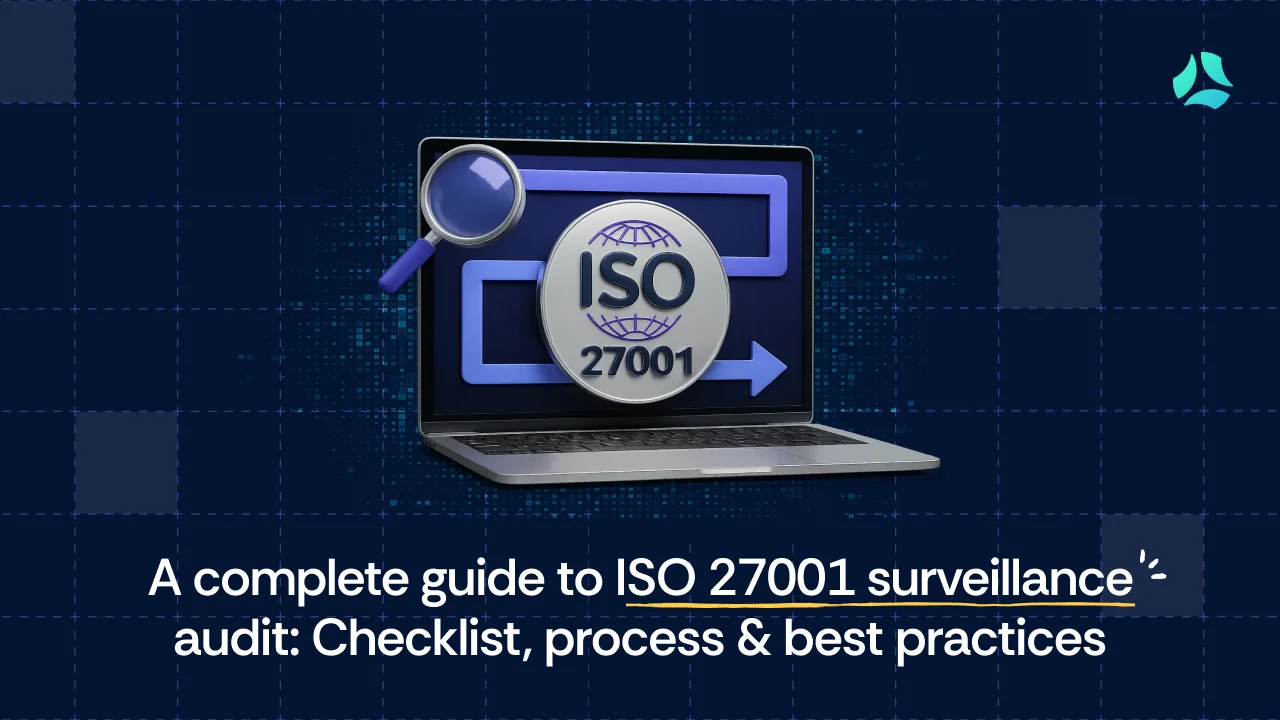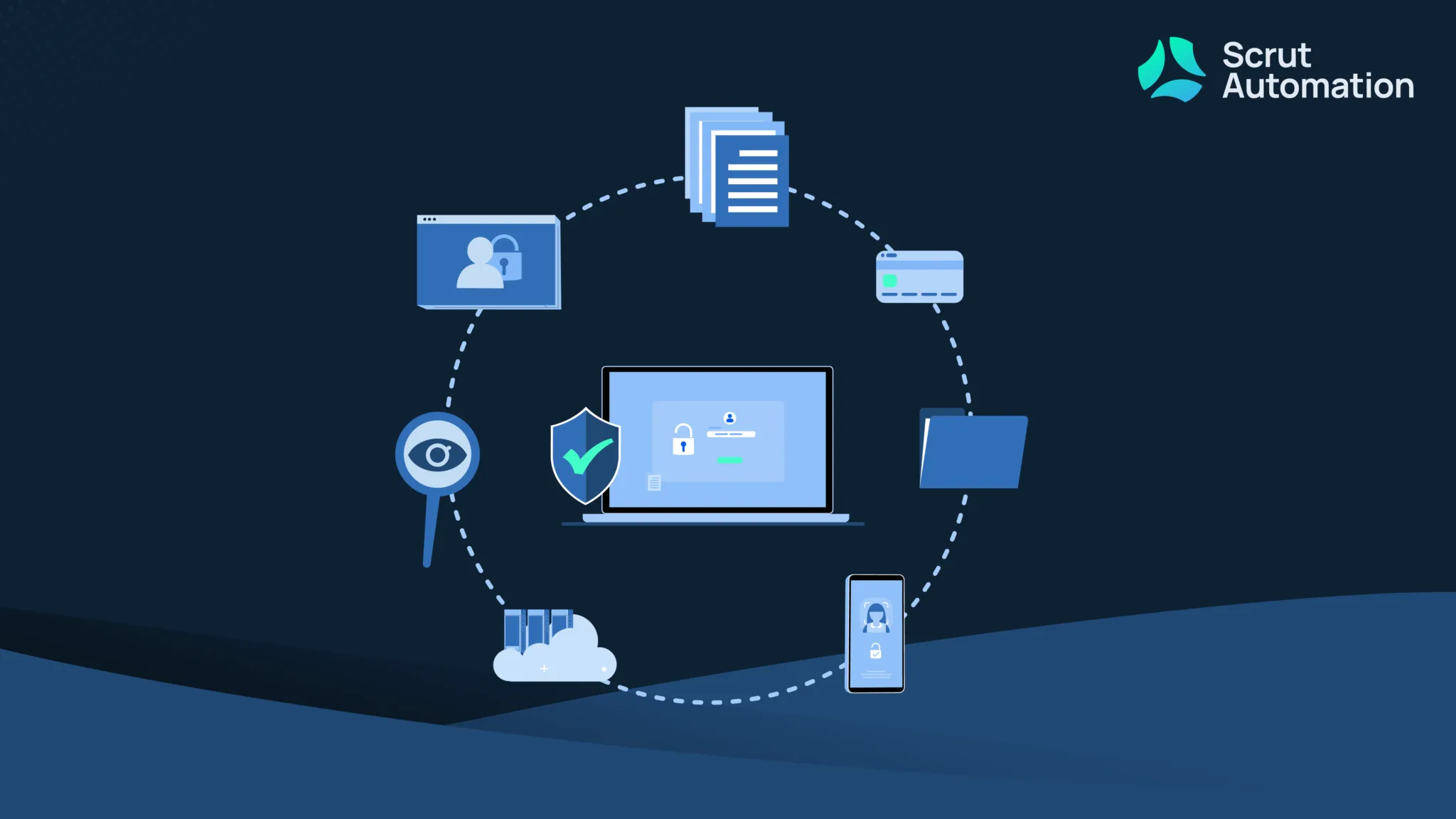A Complete Guide to ISO 27001 Surveillance Audit: Checklist, Process & Best Practices

If you're reading this, chances are you're staring at an upcoming ISO 27001 surveillance audit with a mixture of dread and confusion. You're not alone. Most organizations struggle with the same fundamental questions: What exactly will the auditor examine? How much evidence do I need to prepare? And most importantly, how can I avoid the manual scramble that seems to consume weeks of preparation time?
The reality is that surveillance audits don't have to be the disruptive, resource-intensive ordeal that many organizations experience. With the right approach—and the right automation tools—you can transform your surveillance audit from a stressful event into a routine validation of your already-running compliance processes.
This guide will walk you through everything you need to know about ISO 27001 surveillance audits, from understanding what they actually entail to implementing systems that keep you audit-ready year-round.
What is an ISO 27001 surveillance audit?
An ISO 27001 surveillance audit is a periodic assessment conducted by your certification body to verify that your information security management system (ISMS) continues to meet the standard's requirements. Think of it as a focused health check for your security management system rather than a comprehensive examination.
Unlike your initial certification audit, which evaluated every aspect of your ISMS, surveillance audits are strategically targeted. The auditor focuses on specific areas, particularly those where non-conformities were found previously, areas that have undergone significant changes, or critical processes that directly impact your security posture.
Differences between audit types
This distinction is crucial because it changes how you prepare. You don't need to demonstrate every single control during a surveillance audit. Instead, you need to show that your management system is functioning effectively and addressing previous findings.
Timeline & frequency
Your ISO 27001 certification follows a predictable three-year cycle:
- Year 1: First surveillance audit (approximately 12 months after initial certification)
- Year 2: Second surveillance audit
- Year 3: Recertification audit (comprehensive review before certificate renewal)
Surveillance audits must occur at least once annually during the certification period. Surveillance audits cannot be scoped under a fixed duration. Companies calculate the required time with a complex formula considering the number of employees, risks, and the scope of the ISMS.
What gets audited?
Surveillance audits follow predictable patterns, focusing on areas that provide the best insight into your ISMS's ongoing effectiveness:
Example control areas commonly reviewed
- Management review processes and evidence of leadership engagement
- Internal audit program and findings from recent audits
- Risk treatment plan updates and risk assessment reviews
- Corrective actions from previous audits (mandatory review area)
- Incident management processes and security incidents since the last audit
Focus areas based on
- Significant changes to your ISMS scope, technology, or processes
- Controls that were non-conforming in previous audits
- High-risk areas identified in your risk assessment
- New locations or services added since the last audit
Surveillance audit checklist
Internal audit report
- Current internal audit schedule showing systematic coverage of ISMS scope
- Internal audit findings with detailed corrective action plans
- Evidence of closure for all internal audit non-conformities
- Internal auditor competency records and training documentation
Management review
- Management review meeting minutes from the past 12 months
- Leadership decisions on security investments and resource allocation
- ISMS performance data reviewed by management
- Strategic direction and policy updates approved by leadership
Updated risk assessments
- Current risk register reflecting business and technology changes
- Risk treatment decisions with appropriate justification
- New risk identification process evidence since the last audit
- Risk review cycles documentation showing regular updates
Statement of Applicability (SoA) review
- Review and update the SoA to ensure it reflects the current risk treatment plan
- Review if the SoA justifies all included and excluded controls
Corrective actions and improvement
- Previous audit findings with complete closure evidence
- Root cause analysis documentation for significant issues
- Effectiveness verification of implemented corrective actions
- Risk and opportunity assessments related to identified issues to prevent recurrence
- Improvement activities demonstrating lessons learned and systemic enhancements
Incident logs, security training records
- Security incident register with investigation reports
- Lessons learned documentation from incidents
- Security awareness training participation and effectiveness records
- Role-specific training for personnel with security responsibilities
Asset inventory, supplier monitoring
- Current asset inventory with proper classification
- Asset ownership and responsibility assignments
- Supplier security assessments for critical vendors
- Third-party monitoring results and follow-up actions
How to prepare for a surveillance audit
Step 1: Assign an audit coordinator
The biggest mistake organizations make is trying to manage surveillance audit preparation across multiple departments without clear coordination. Choose someone who has participated in previous audits and understands your ISMS structure. This person becomes your central hub for audit communications and evidence organization.
Step 2: Review past audit findings and close non-conformities
This is absolutely non-negotiable. Auditors will specifically verify that every corrective action from your previous audit has been implemented effectively. For each previous finding, document not just what you did, but how you verified it worked and what systemic changes you made to prevent recurrence.
Step 3: Keep evidence centralized and version-controlled
Scattered documentation across multiple systems creates audit stress and extends audit duration. Organize evidence by ISMS clause or process area, ensure all documents reflect current practices, and establish clear version control procedures.
Step 4: Conduct a mock audit or gap analysis
Run through your own comprehensive review 4-6 weeks before the audit. This timing provides enough runway to address gaps without panic. Focus on management review currency, internal audit program effectiveness, and risk management updates.
Step 5: Ensure employee readiness
Brief key personnel on their roles during the audit, emphasizing honest, direct communication rather than scripted responses. Ensure they can demonstrate how security controls work in practice, not just describe them from documentation.
Common non-conformities in surveillance audits
1. Missed risk reviews
Organizations treat risk assessment as an annual exercise rather than an ongoing process. When new systems, processes, or business relationships introduce risks that aren't captured in the formal risk register, it creates a disconnect between documented and operational reality.
Prevention: Schedule quarterly risk reviews and implement change-driven risk assessment for new systems or partnerships.
2. Lack of evidence for control implementation
Controls may be documented but not actually function as designed. This occurs when organizations focus on creating procedures without verifying they're being followed or are effective.
Prevention: Implement regular control testing and maintain evidence trails showing controls are operating effectively.
3. Poor documentation
Documentation that's outdated, inconsistent, or doesn't reflect actual practices signals that the ISMS isn't integrated into daily operations.
Prevention: Establish document review cycles and ensure procedures match actual operational practices.
4. Unaddressed non-conformities from previous audits
The most common surveillance audit failure occurs when corrective actions from previous audits aren't properly implemented or verified.
Prevention: Create systematic tracking for all corrective actions with effectiveness verification before considering them closed.
Tools to simplify ISO 27001 surveillance audits
GRC platforms (Scrut, Vanta, Drata, LogicGate, etc.)
Modern compliance platforms eliminate the manual scrambling that makes surveillance audits stressful. These tools provide centralized evidence management, automated control monitoring, and systematic workflow tracking.
Automated control tracking
Instead of manually checking control effectiveness before audits, automated monitoring provides real-time visibility. You know immediately when controls drift from expected states, allowing proactive issue resolution.
Evidence collection workflows
Automated evidence collection through integrations with existing technology eliminates weeks of manual preparation. All compliance evidence is continuously gathered and organized, maintaining audit readiness year-round.
Surveillance vs. recertification audits
The key insight: If surveillance audit preparation feels as intensive as recertification preparation, it indicates that compliance activities aren't properly integrated into normal operations.
Best practices
Step 1: Don't wait for the audit – treat compliance as a continuous process
Organizations that struggle most with surveillance audits treat ISO 27001 as an annual or audit-driven activity. Instead, embed security and compliance into regular business meetings, integrate compliance considerations into change management, and make security awareness part of ongoing communications.
Step 2: Set quarterly review cycles
Create predictable touchpoints that keep your ISMS current between audits:
- Q1: Annual management review and strategic planning
- Q2: Mid-year risk assessment review and policy updates
- Q3: Internal audit program execution and finding resolution
- Q4: Year-end performance assessment and surveillance audit preparation
Step 3: Involve all departments, not just security
ISO 27001 requires organizational-wide engagement. Ensure HR understands their role in security awareness and access management, operations teams know asset management and change control responsibilities, and business units recognize their security obligations for risk identification and incident reporting.
Step 4: Keep auditor feedback loops
Transform surveillance audits from compliance exercises into improvement opportunities. Ask auditors for industry insights and process improvement suggestions. Request guidance on preparation efficiency and consider scheduling informal check-ins between formal audits.
Final thoughts
Your surveillance audit doesn't have to be a stressful disruption that consumes weeks of preparation time. When you approach surveillance audits with proper systems and the right mindset, they become routine validations of security management practices you're already maintaining.
The key transformation happens when you shift from reactive compliance to proactive compliance management through integrated processes and intelligent automation. Organizations making this shift consistently report dramatically reduced preparation time, better audit outcomes, and improved security posture overall.
Ready to transform your approach to ISO 27001 surveillance audits? Modern compliance automation platforms eliminate the manual processes that make audit preparation stressful and time-consuming. Schedule a demo with Scrut to see how automated evidence collection, continuous control monitoring, and centralized documentation management can keep you audit-ready year-round.
Don't wait until your next surveillance audit notice arrives. Start building the automated, proactive compliance program that makes audits routine rather than disruptive.


















